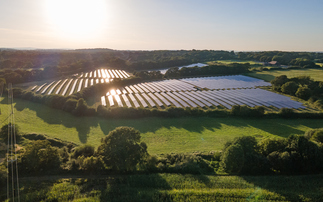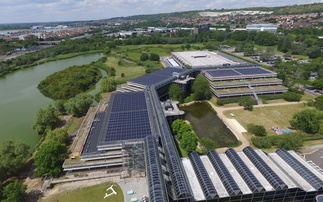National Land Realty's mapping tool can identify prospective sites in weeks, rather than months
Many variables go into deciding whether a parcel of land is appropriate for solar development: the intensity of the sun's resources, how much space is available to accommodate arrays, soil types, environmental considerations, such as wetlands or endangered species status, and proximity to existing substations or three-phase towers.
Researching a site for any one factor can be challenging enough. Considering all of them simultaneously usually takes months.
Impatient with that timetable, real estate broker National Land Realty (NLR) turned to the ArcGIS online mapping and data visualization resource from Environment Systems Research Institute (Esri) to rethink how it evaluates land for solar development.
Together with Columbia, S.C-based Beitz and Daigh Geographics, NLR has created a sophisticated service that identifies prospects in weeks rather than months, displaying them interactively in a map view. While GIS mapping is not new, what is compelling about this particular application is that the layers can be updated in near real time. They can be viewed with a Web browser on personal computers, tablets or smartphones.
How effective is the approach? One NLR client, solar developer FLS Energy of Asheville, N.C., identified close to 30 opportunities in the southeast states that NLR represents in just 60 days, said Dean Sinatra, NLR's chief operating officer. For perspective, FLS had roughly 125 acres under development in 2013, with 450 more acres planned for construction this year. It has completed roughly 100 projects.
"Currently, the states we are developing solar projects in or plan to are states which are the most conducive to solar development, both from a regulatory as well as a solar resource standpoint," said Brownie Newman, vice president of business development, in a case study about NLR's solar mapping tool. "We are looking for flat, cleared, non-flood plain parcels that are adjacent to three-phase power. In addition, we are looking for parcels which are serviced by a utility which offers power purchase agreements sufficient in length to make the projects financeable as well as providing a high enough avoided cost rate to support the debt service of the project."
Considering how long it can take for a solar project to be entitled - at least 12 to 18 months - having a more qualified pipeline of sites upfront is extremely important. "We are able to do a much higher level of due diligence," Sinatra said.
Oodles of data
NLR's solution combines information from multiple relevant data sources, including state grid maps from the utility companies, land information collected by local governments and topographical base maps. That data then is displayed using the ArcGIS service.
"Our job was to help find the data and format the data so we could upload this to the online resource," said David Beitz, president of Beitz and Daigh. "In the past, you might have an analyst creating these maps and sharing them as a PDF. Now, you can share data into the cloud, have it password-protected, opened. They can pull in these layers, it opens up more possibilities."
The ArcGIS service underlying the NLR application aggregates more than 400,000 topics, subjects and context maps that can be combined in different ways to visualize certain questions, said Simon Thompson, director of commercial solutions for Esri.
For example, retail companies often use the service to research new site selections for considerations such as water availability, the ability to support onsite solar installations and whether the site conforms with green transportation strategies. "People are dramatically reorganizing their facilities using this sort of information," Thompson said.
The ArcGIS-driven application that NLR has created won't be exclusive to North Carolina, although that's the territory it covers right now, Sinatra said. The research variables can be changed, depending on a developer's requirements. The company also has had interest from developers in places such as California; it will take a matter of weeks for the service to be extended to other states.
"This is absolutely a competitive differentiator," Sinatra said. "How we use Esri is very unique, how we put all the pieces together."
Pricing for the ArcGIS Online service starts at $2,500 annually for five users; that includes 2,500 service credits, which are required for using certain services, such as geocoding or spatial analysis.
This article first appeared at GreenBiz.com






